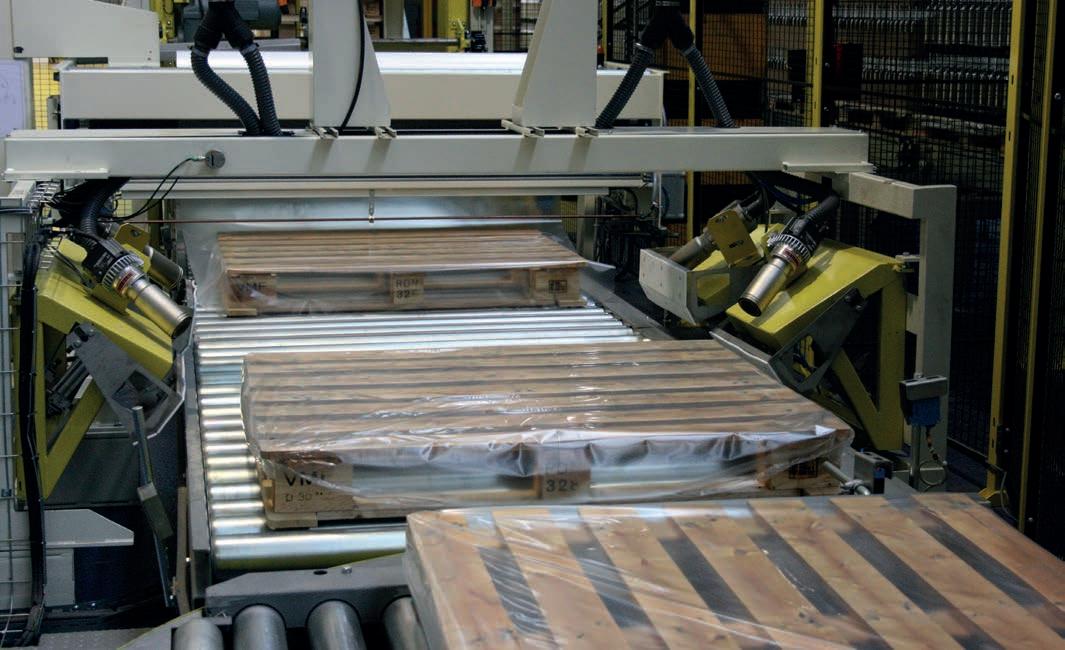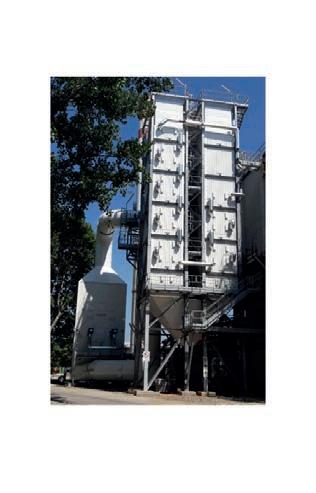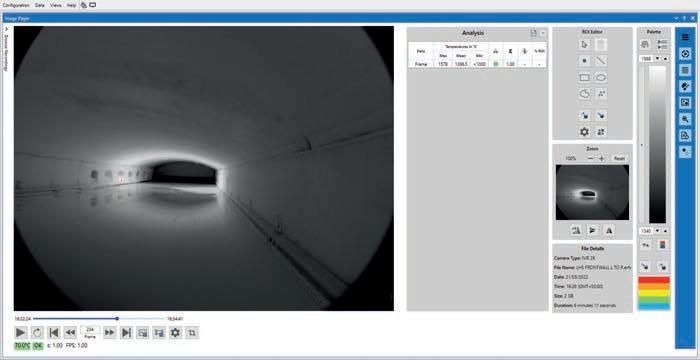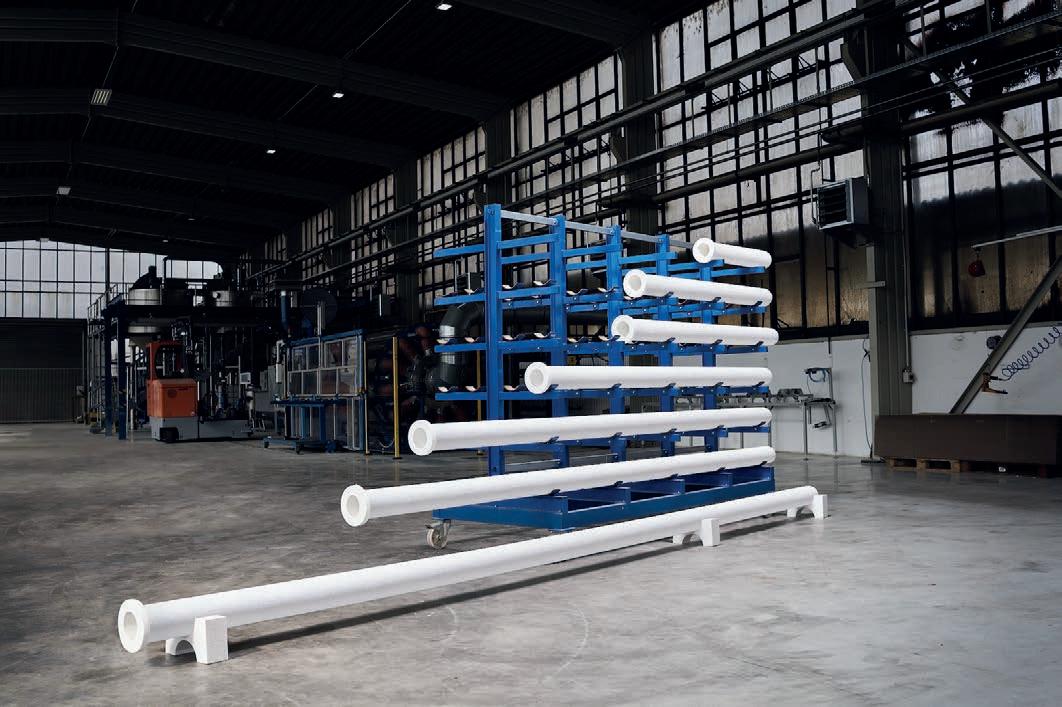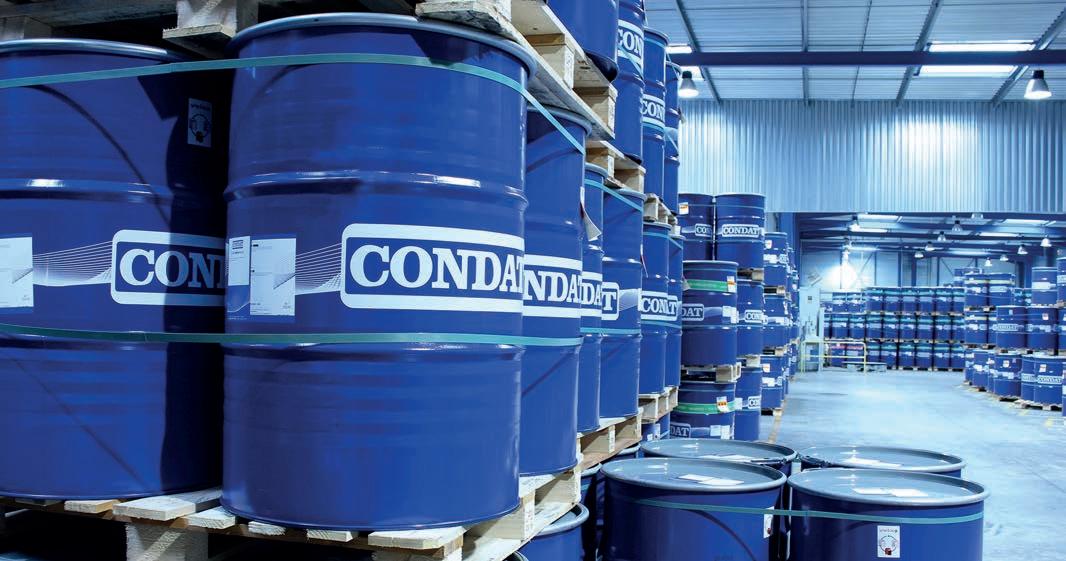
9 minute read
Decarbonisation: Glass Futures
(Above) Fig 2. Hydrogen flame in the CTB.

Fig 1. Palma present during the flat glass biofuel trials at Pilkington UK Ltd [NSG Group] for the IFS Phase 3 programme.
How hydrogen as a fuel can help us to meet global net zero goals
Dr Palma Gonzalez Garcia* discusses the advantages and pitfalls of the use of hydrogen in glassmaking.
Hydrogen is my passion. Before Glass Futures I studied this molecule and worked on developing technology to produce green hydrogen using electrolysis and renewable energy.
As we face a climate emergency, I’m a firm believer in hydrogen as the flame of the future and I’m convinced it can play a key role in decarbonisation of the glass industry.
We know glass is really carbon intensive. Internationally, glass manufacturing produces at least 86 million tonnes of CO2 annually. But most of this can be eliminated when glass is recycled, and existing technologies could turn glass manufacturing into a mostly carbon-free process. And there lies the challenge to make it clean. To find a solution suitable for everyone in the world including countries where glass isn’t recycled.
Many countries have committed to global net zero targets. In the UK alone, the government has established a 78% carbon reduction target by 2035, with the net zero target by 2050. Globally, there’s the Paris Agreement, committing countries to limit global warming to well below 2°C, compared to pre-industrial levels. To achieve these goals we need to do something different right now, as Einstein said “insanity is doing the same thing over and over again and expecting different results”.
Disrupting the industry
To be able to make the necessary changes, there’s no longer room for small improvements. At Glass Futures our aim is to become disrupters through collaboration and technical innovation delivering the necessary changes to create markets for change, creating a space where industry and academia can experiment and test new technologies.

Fig 3. Palma turning on the gas during fire up of the CTB.
The technology readiness level of commercial scale furnaces is high, to suit market demand. Glass furnaces are built from scratch and will operate for around 20 years non-stop, so it’s really difficult, practically impossible, to test new technologies which could improve the glass making process and make it more sustainable. This would pose too high a risk for industry, losing production for a day or longer would mean losing millions of pounds. Our sector, as well as other heavy industries is highly risk averse.
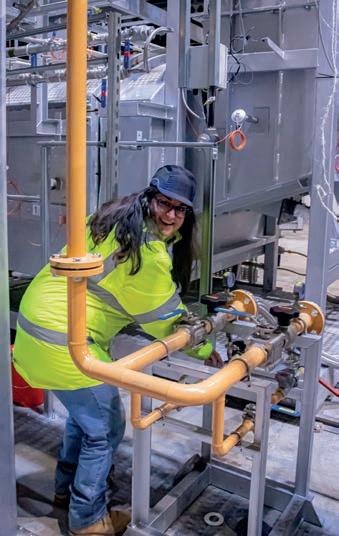
Fig 4 . Palma turning on the gas during the fire up of the CTB.
On the other hand, the technology readiness level of academia is low. They mainly build research prototypes focused on finding solutions for a specific problem and often have little commerciality. Therefore, you can see there’s a gap, but how do we bridge it? Our new Global Centre of Excellence in St Helens will provide a 30 tonne per day glass facility bringing people together to implement ideas and new technologies at industrial scale. This testing of prototypes and research into different energy sources and raw materials will give industry the confidence to introduce new sustainable solutions in their furnaces without the risk of losing production.
What about hydrogen and other fuel sources?
In 2020, we received £7.1m for the Industrial Fuel Switching (IFS) programme funded by the Department of Business, Energy and Industrial Strategy (BEIS) in the UK. The programme ran between January 2021 and March 2022 bringing together those all-important partners from industry, the supply chain and academia. The soul of the programme was to find suitable alternative low carbon fuels to enable the decarbonisation of the glass sector and, potentially, the rest of the foundation industries.
We looked into biofuels, electric boost and of course hydrogen including different hybrid fuels by combining some of these fuels. We looked at: � the efficiency of the fuel in combustion and performance, the effect on glass melting and if any modifications are required to the industrial fuel delivery systems due to the properties of the fuel such as corrosion, density, flashpoint � the cost of obtaining fuels such as green hydrogen versus grey/blue plus availability � whether the fuel is safe to handle and any health and safety requirements for storage etc and � its environmental impact including emissions after the combustion process.
As part of the IFS project, we ran several pilot-scale tests looking into the effects of hydrogen in glass melts, oxyfuel and hydrogen tests. We also investigated a range of fuels including pure hydrogen in our 350kW combustion test bed. The full results are being published in conjunction with BEIS this summer.
The combustion properties of hydrogen are substantially different from those of natural gas because of its calorific value and its high velocity and diffusion rate. Adapted nozzles and burners showed stable combustion and at input powers of up to 275kW the flame shape is very similar to natural gas.
The experiments showed negligible hydrogen concentration in the flue, which indicates complete combustion. NOx was detected due to air ingress in the furnace. Overall, they showed that with optimised combustion to limit the NOx emissions, new burner technology will enable hydrogen and oxygen combustion on an industrial scale.
In terms of the impact of hydrogen in glass melts, we used different raw material recipes to investigate the impact of hydrogen combustion on the foam build up and stability in glass melts. Preliminary melts showed glass foaming seems to be enhanced by the presence of water in the atmosphere.
The programme also saw us carry out the first large scale trials using 100% biofuel in two industrial plants, Encirc - container glass and NSG Pilkington - float glass. Both were a major success showing biofuel as an alternative low carbon fuel for the glass sector.

Fig 5. Combustion Test Bed [CTB] in Brinsworth, Rotherham, UK which will be transported to the Global Centre of Excellence once operational.
During the three-week trial at Encirc, UK multinational beverage alcohol company Diageo used its Black & White Scotch whisky brand to produce a total of 173,000 bottles using 100% recycled glass. More than 1 million bottles of Carlsberg were also made, reducing the carbon footprint by 90%.
The four-day flat glass trial made NSG Pilkington the world’s first flat glass manufacturer to fire its furnace on 100% biofuel. One of its furnaces was powered on a sustainable biofuel made from organic waste materials, creating 165,000ft2 of the lowest carbon float glass ever made. The fuel emits circa 80% less*1 CO2 than traditional natural gas used in the sector.
Hydrogen advantages and pitfalls: � Despite being the most abundant molecule it can’t be found in Earth’s atmosphere on its own so has to be produced. � It’s non-toxic. Hydrogen produced from alternative energy sources such as solar and electrolysis provide clean and environmentally friendly energy due to recyclability of its generation and combustion. � It can be stored in bulk for long periods and be easily produced and transported. � It’s highly dense. It contains the largest amount of energy by mass with greater efficiency than the majority of fossil fuels. � It’s a clean fuel that produces only water as a by product.
Hydrogen is a flexible energy source which supports the global net-zero strategies with the potential to abate 80 gigatons of CO2 by 2050, according to the Hydrogen for Net Zero report. Clean hydrogen (both renewable and low carbon) offers the only long-term, scalable, and cost-effective option for deep decarbonisation in sectors such as steel, maritime, aviation, and ammonia. Essentially there will be no net zero without carbon capture and hydrogen.
Yet, however promising hydrogen is there are several challenges that still need to be overcome. � People have a fear of hydrogen because it’s flammable so is perceived by many as dangerous. � Clean production is still a challenge. Today, 95% of hydrogen is produced from wood or fossil fuels, mainly by steam methane reformation, meaning the hydrogen is far from green or blue. Steam methane reformation with newly developed carbon capture technologies can produce relatively clean hydrogen, known as blue, which is a good solution as green hydrogen is still in the early days of development.
� The ability to produce large amounts of green or blue hydrogen is limited as large amounts of inexpensive and carbon-neutral electricity is needed. Within the UK we simply don’t have enough wind, tidal and solar electricity to make green hydrogen production viable. � The cost of electrolysis is still very high compared to other ways of hydrogen. Alkaline electrolysis in the UK (including capex) producing 12.53/kg, based on PEM electrolysis production is around £14.86/ kg, while blue hydrogen production by autothermal reforming is £4.81/kg (including capex, CCS and carbon). As time goes by, it’s expected that the cost of green hydrogen will decrease. � Hydrogen at high pressure causes embrittlement which can cause breakages to pipework/storage if stainless steel with 12% plus nickel isn’t used. � It can easily leak through flanges and fittings so existing transport networks and tanks will need upgrading. � Distribution is tricky. Depending on the site, delivery can be difficult and the size of a furness/facility might not make an on-site hydrogen production plant feasible.
Long-term outlook
We know hydrogen is clean but during testing we’ve seen that NOx levels can be problematic when burning pure hydrogen. This means, that NOx control technologies must be developed and implemented to mitigate noxious nitrogen emissions.
We also need to see what the longerterm effects are on the furnace refractories with such high water content and understand how hydrogen combustion affects the furnace atmosphere and glass chemistry and quality long-term.
Despite the challenges, I’m convinced that hydrogen will hold the key to decarbonisation in the foundation industries.
Yes, the challenges are many, but they’re the challenges we’ll be able to overcome through working together globally.
Research and development will be the key to finding solutions, that’s why we’ll use our new pilot plant to work on radical, disruptive new programmes with our partners in search of the best technologies for our sector and beyond. �
*Combustion Technical Lead, Glass Futures, St Helens, UK https://www.glass-futures.org/



